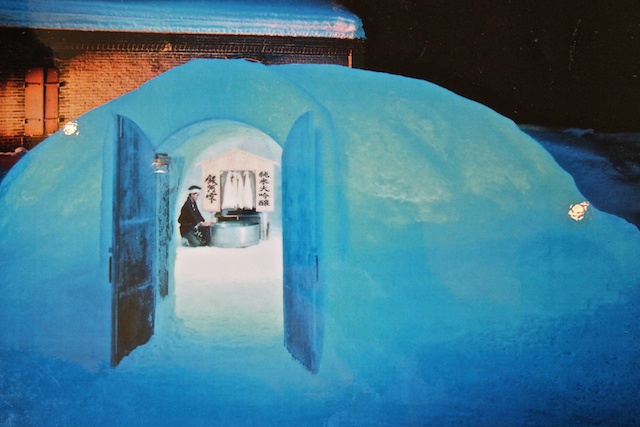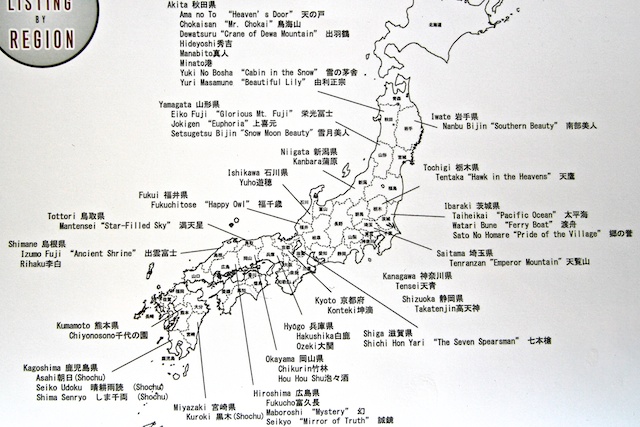For Goodness Sake

There are some things at K&L that we simply struggle with; ice, cold bottles of wine, mixers, tonic water and soda would all be good examples. Sake would be another one. We've never really been up to par with our sake selection here; settling for just a few bottles pushed back into the corner to suffice the occasional request. None of us on the sales floor knew much about the stock, and most of the time we had no idea what our inventory actually consisted of. I figured we could change all this with a few easy phone calls, so I put in a request to have Tamiko Ishidate—the sake expert for the Estate's Group—come by the store and train the staff. We all gathered a glass, some pens and paper, and settled in for a hands-on tutorial. With all the interest in Japanese culture, whisky, and food we have bubbling here on the Peninsula, the potential of a great sake selection could really bring in a new crowd of enthusiasts here at K&L. Plus, it's our duty to know about these things (and be excited about them!).

The first thing that had to change was the location. We had all the bottles with the mixers back by the glassware, but I have since merged them into the Japanese whisky shelf, so now everything to do with Japan at K&L is all in one area. Second, was a formal education. We all know that sake is made from fermented rice, but what else do we know beyond that? There are two main families of sake: the Junmai designation, meaning that no additional neutral spirit has been added to the sake (just the alcohol from fermentation), and those sakes that have been fortified with a sugar-based alcohol. From that point it becomes about the milling of the rice; how much of the outer layer (the part with the fat and the protein) has been whittled away to get to the starch in the center. Daiginjo sakes, for example, have at least 50% of the outer layer removed. Then you've got the type of rice, where it's from, and all the regional stuff. But, as Tamiko told us, sake (like whisky) is much more about the decisions and craftsmanship of the brewer than it is about the inherent flavor of the rice itself. Like "Highland" single malt, there may be some regional character to sake, but not necessarily. I'm sure we'll learn more as we go.
So what did we taste, and what do we have currently at K&L? Here's the lineup:
Tozai "Typhoon" Futsu Sake 720ml $9.99 - This is a surprisingly delicious considering the bargain basement price. Soft, crisp flavors of citrus with refreshing acidity, the Typhoon could easily be thrown into a white wine tasting as a dynamic substitute. For the price, it also makes a fantastic mixer into specialty cocktails. Try it instead of dry vermouth in a martini, or use it in a Corpse Reviver instead of Lillet. Again, for the money, it's a fantastic beginner's bottle that brings clean, authentic sake character for a bargain.
Dewatsuru Kimoto Junmai Sake $29.99 - The Dewatsuru is completely different than any of the other sakes we tasted and it uses the "kimoto" process which involves creating a starter that ultimately produces a natural lactic acid (rather than simply adding it to the fermentation), resulting in a more powerful flavor. In this case, the earthy aromas are more pungent and there's a mushroomy flavor on the palate. The mouthfeel is also richer, more supple, and creamier. It's very distinctive and wonderfully balanced.
Kanbara "Bride of the Fox" Junmai Ginjo Sake $32.99 -Polished to 50%, this Junmai Ginjo is made by Kaetsu Shuzo, who uses rice grown on the high plains and pure mountain water of the Niigata Prefecture to brew superior sake, both rich in aroma and clean in taste. There's a bouquet of ripe tropical fruit on the nose that slowly blossoms into a nutty, umami note on the finish. Tamiko noted that the removal of 50% of the outer rice layer allows the yeast to interact more potently with the starch; without the fats and proteins. This could be why the fruit flavors created by the yeast are so much more explosive. Lovely stuff!
Seikyo "Omachi" Junmai Ginjo Sake $29.99 - Here we have a sake where the type of rice is very important. made from 100% Omachi rice, a super premium rice source more than 150 years old that is harvested in very limited amounts. It is polished up to 55%. This was the most elegant sake we tasted today; very clean, graceful, balanced, and refined. There are crisp melon flavors and just a bit of sweetness on the finish. Made in Hiroshima, Tamiko noted that the regional cuisine tends to be just a bit sweeter than the rest of Japan; hence the bit of residual sugar. Made to pair with the food! Just like the regional wines of Europe.
Konteki "Tears of Dawn" Daiginjo Sake $38.99 -From one of Japan's smallest breweries, this Daiginjo is made with Japan's highest quality rice and local Fushimi mizu, the soft, pure water from Japan's Eastern Mountains. The palate is a bit riper and (Bourbon fans will know about this) there's a bit of banana flavor from the yeast strain used. Very soft and silky. High quality stuff.

Ginga Shizuku "Divine Droplets" Junmai Daiginjo Sake $64.99 - This was the most expensive sake we tasted and for good reason: it's actually drip-pressed (the shizuku process) in an ice igloo (which you can see in the above photo) which is rebuilt every year outside the main brewery in Hokkaido. It's too cold to grow the rice on Japan's northern island, so the grain is shipped in. The process, however, could only take place there with the freezing temperatures. The sake is hung in mesh bags and the droplets that fall to the ground are collected and bottled. Simply amazing. Sake of the highest quality!
Chokaisan Junmai Daiginjo Sake $49.99 -This is one of the best sakes we carry at K&L--period. I would bring this bottle to a dinner party and just drink it like a bottle of white wine or rose. We need to get out of the habit where we only drink sake when we eat Japanese food. This is the bottle that should prove to serious wine drinkers that sake can easily hang with a great Sancerre or an Alsatian pinot gris. Crisp, vibrant fruit on the entry with hints of pear on the finish. Made with a unique yeast derived from flowers, the sake is one of the most aromatic and delicious we carry, as well as one of the most special.
Yuki No Bosha "Cabin in the Snow" Junmai Ginjo Nigori Sake $18.99- This is a "nigori" sake meaning that the spent lees cells (the leftover yeast components) are left in the wine (like many fine Champagnes) to create a richer, fuller, milkier sake. The flavors are still classic with notes of coconut water and sweet rice, balanced by crisp fruit and acidity. Super fun. These are in 300ml bottles.
Dewatsuru Sakura Emaki Rose Futsuushu Sake $19.99 -The Sakura Emaki is made from the ancient purple rices known as Asamurasaki and Okunomurasaki, two varieties long thought lost. During an excavation of an ancient fort these grains were rediscovered. The Ministry of Agriculture petitioned Akita Seishu brewery (home of Dewatsuru) to develop a sake utilizing these heirloom grains and the Sakura Emaki was born. Deriving its pinkish hue from the grain (which is a deep purple) this has much in common with the wine-based rosés. The flavor profile is strawberries, watermelon and cherry blossoms. So unique and so beautiful. You could easily substitute this for a Bandol or Tavel rose at your next wine party.

Tamiko had a map with her that showed the origins of each sake, but I'll have to invest in a better copy and maybe a few books if I'm going to really get up to speed.
In the meantime, I think we need to schedule an in-store tasting and do some events. Sake is so much fun and so versatile, not to mention the shochus I tasted but haven't found time to write up yet. In any case, expect more from this department. There's a lot of room to grow here.
-David Driscoll
